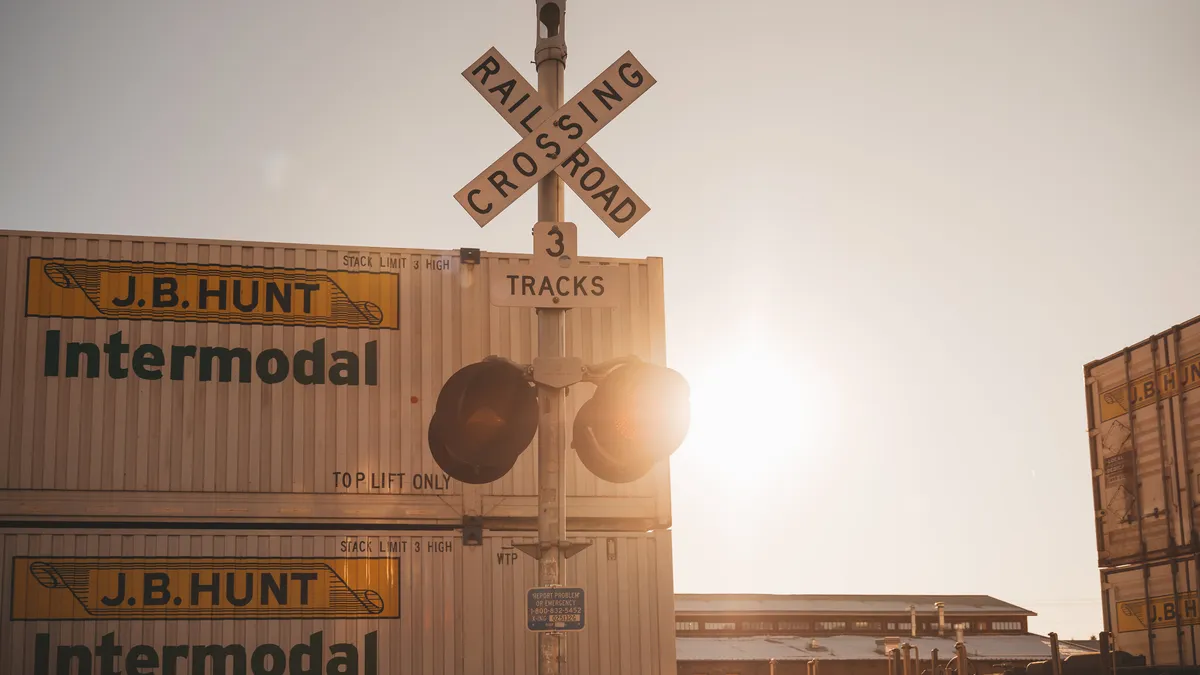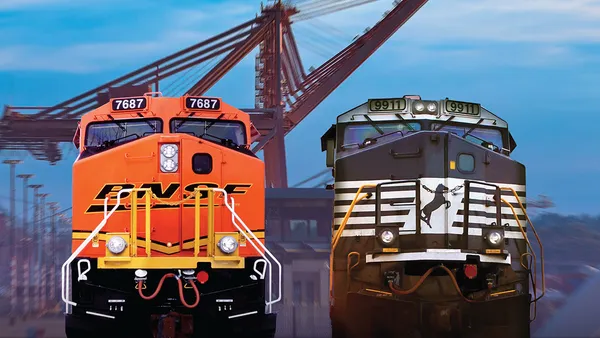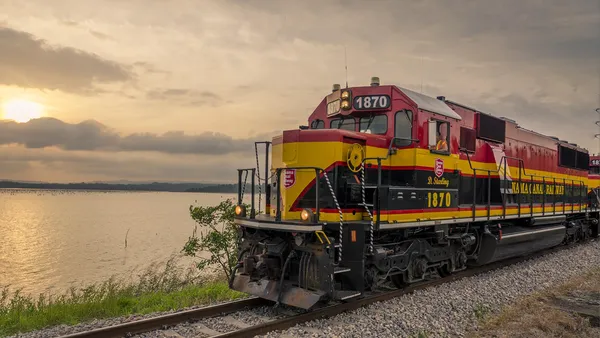Dive Brief:
- Rail congestion is hampering J.B. Hunt's performance, President of Intermodal Darren Field said on an earnings call Tuesday. While customers' equipment turn times improved in Q4, "those improvements were effectively offset by further deterioration in other parts of the network — namely, rail velocity," Field said.
- J.B. Hunt is growing its intermodal segment, with investments in boxes, trucks and chassis, Field said. And if its rail partners can't improve velocity, the company will have to buy more equipment to sustain that level of expansion, he added.
- Working with rail partners to "unlock the latent capacity in the network," as Field said, is key for growth in 2022. But predicting when exactly network fluidity will improve is difficult, especially with the omicron variant's impact on customers' operations, he said.
Dive Insight:
Bottlenecks have formed at multiple links in the supply chain for months. J.B. Hunt has been lamenting rail speeds, in particular, for several quarters.
Rail velocity was slower than expected in Q3. The trend continued for the following three months, even taking a step back in Q4, according to Field. As a result of slow box turns, volumes in Q4 were down 3% YoY, he said.
Adding equipment is a remedy the carrier often leans on, but supply chain constraints within OEMs' businesses are slowing that process, as well.
J.B. Hunt was expecting to take delivery of 12,000 intermodal containers last year, but only 6,000 of them came. Deliveries from the other half are now supposed to come in the first half of this year.
"The good news is demand remains extremely strong," Field said about intermodal. "We have customer business that we could have onboarded in the fourth quarter that we weren’t able to because of a slowdown in velocity and capacity."
Railroads "want nothing more than for velocity to improve," Field said, so he's confident they will speed up and decongest.
For their part, railroads are investing in technology, expanding operating hours and offering incentives to customers who pick up their freight in a more timely manner in an effort to speed their networks.
For most Class I railroads, some causes of rail congestion are self-inflicted. Many slowdowns can be attributed to cost-cutting measures under the switch to precision-scheduled railroading.
But BNSF Railway, which did not adopt PSR, appears to be just as susceptible to network clogs. The "majority" of J.B. Hunt's business travels on BNSF and Norfolk Southern, according to a 2020 10-K.
When asked about capacity on BNSF by an analyst on the earnings call, Field said J.B. Hunt was having daily discussions with the railroad about how to grow together.
"We are aware of another channel that certainly left BNSF and went to Union Pacific. And certainly, that presents an opportunity," Field said.
He did not name that "channel," but Schneider announced Wednesday morning — the day after the J.B. Hunt earnings call — that it was cutting ties with its current rail partner in the western U.S. at the end of 2022 to instead partner with Union Pacific. Schneider didn't name the rail partner it plans to leave, but signs seem to point to BNSF.
"One of our competitors has a preferential contractual arrangement with BNSF, which limits the market share and relative profitability of the services we provide through BNSF," Schneider said in its 2019 10-K.
J.B. Hunt and Schneider are competitors in the intermodal space, with the former's capacity overshadowing the latter's. But Schneider is working to grow and plans to double its fleet of 25,000 containers by 2030.
When Schneider's partnership with Union Pacific begins, the truck carrier will have the largest drayage fleet with company drivers of any intermodal carrier hauling with Union Pacific, Schneider said. That will take it out from under the shadow of its experiences with BNSF.
"Having a differentiated rail network is a key component to our intermodal growth strategy," Schneider CEO Mark Rourke said in a press release.
This story was first published in our sister publication, Transport Dive. Sign up here.














